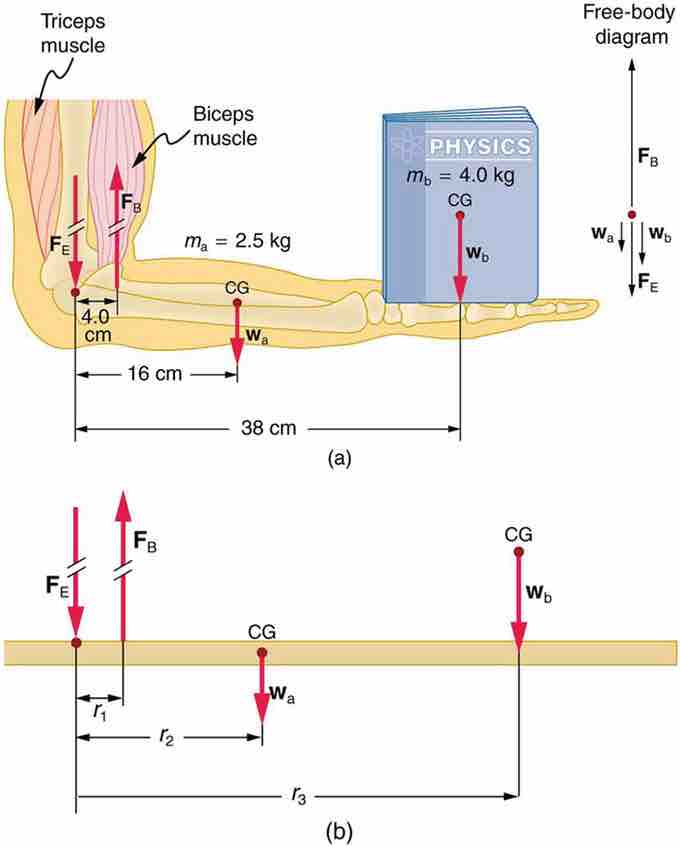Muscles and Joints
Muscles and joints involve very interesting applications of statics. Muscles can only contract, so they occur in pairs. In the arm, the biceps muscle is a flexor: it closes the limb. The triceps muscle is an extensor that opens the limb. This configuration is typical of skeletal muscles, bones, and joints in humans and other vertebrates. Most skeletal muscles exert much larger forces within the body than the limbs will apply to the outside world. The reason is clear, since most muscles are attached to bones via tendons close to joints, causing these systems to have mechanical advantages much less than one. Viewing them as simple machines, the input force is much greater than the output force, as seen in .

The Forearm of a Person Holding a Book
(a. ) The biceps exert a force FB to support the weight of the forearm and the book. The triceps are assumed to be relaxed. (b.) An approximately equivalent mechanical system with the pivot at the elbow joint
Very large forces are also created in the joints. Because muscles can contract but not expand beyond their resting length, joints and muscles often exert forces that act in opposite directions, and thus subtract. Forces in muscles and joints are largest when their load is far from the joint. For example, in racquet sports like tennis, the constant extension of the arm during game play creates large forces. The mass times the lever arm of a tennis racquet is an important factor, and many players use the heaviest racquet they can handle. It is no wonder that joint deterioration and damage to the tendons in the elbow, such as 'tennis elbow,' can result from repetitive motion, undue torques, and possible poor racquet selection in such sports.
Various tried techniques for holding and using a racquet, bat, or stick can not only increase sporting prowess but can minimize fatigue and long-term damage to the body. Training coaches and physical therapists use the knowledge of the relationships between forces and torques in the treatment of muscles and joints. In physical therapy, an exercise routine can apply a particular force and torque, which can revive muscles and joints in time. Some exercises should be performed under water, thus requiring the exertion of more force and further strengthening muscles.